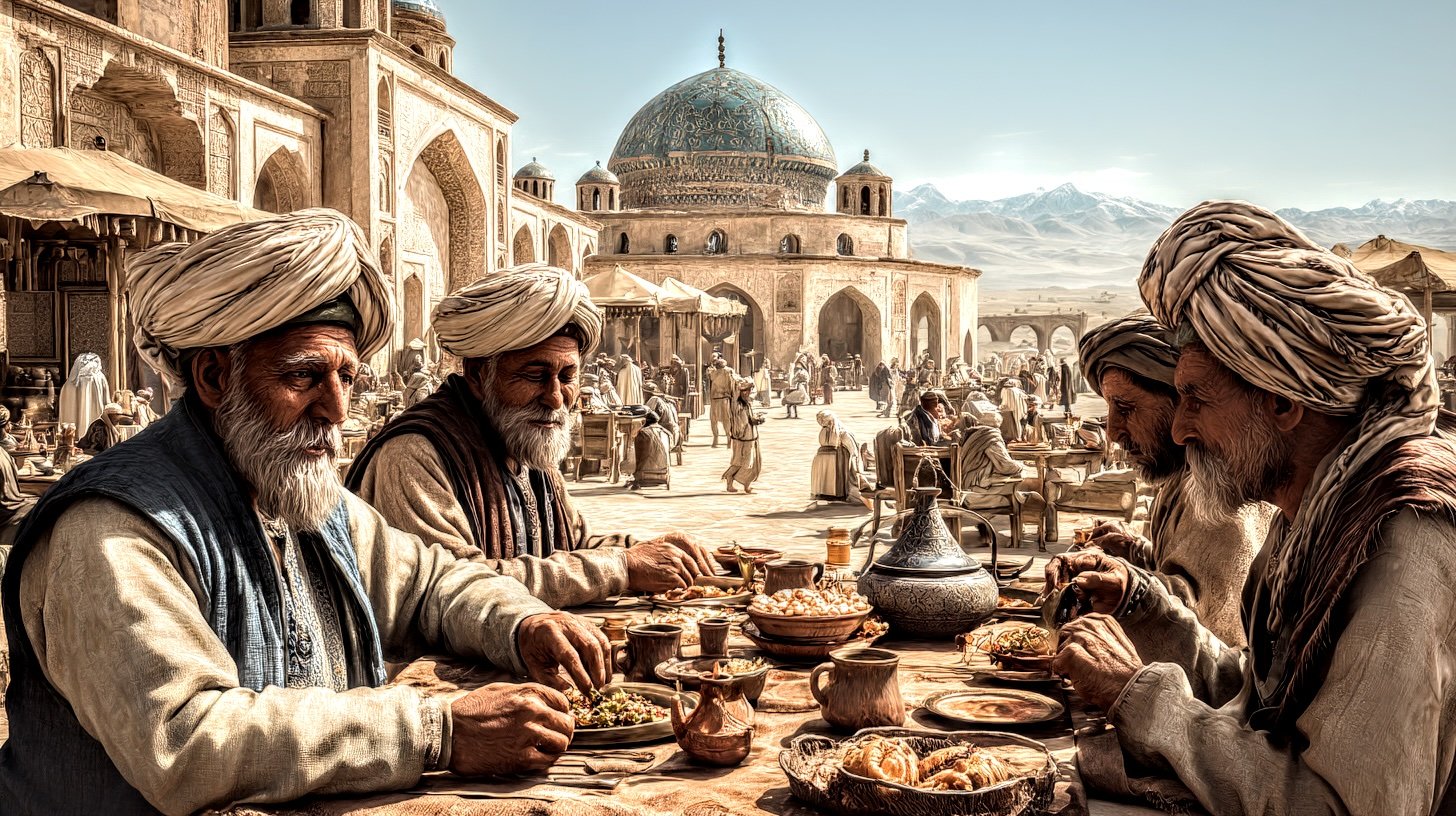Caravanserai: Camel Stops and Culture Swaps
If you ever thought motorway service stations were depressing, wait till you hear about the caravanserai. These ancient roadside inns were the Airbnb-meets-truck-stop of the Silk Road, and they were absolutely essential to the functioning of early global trade. Without them, your local bazaar might never have seen saffron from Persia, lapis lazuli from Afghanistan, or a single spicy whisper of Chinese cinnamon.
The term “caravanserai” sounds like something an indie band would call their first album, but it comes from Persian: “karwan” (caravan) and “serai” (palace or enclosed building). In other words, a palace for a bunch of camels and their disgruntled owners. And honestly, they needed it. Crossing the desolate deserts and snow-bitten mountain passes of Central Asia wasn’t a holiday in the Algarve. Merchants needed rest, water, food, protection from bandits, and ideally, a place to grumble about camel flatulence.
Caravanserais popped up roughly every 30 to 40 kilometres — not because that was some spiritually significant number, but because that’s about how far a camel could go without staging a sit-down protest. Think of them as the medieval equivalent of a Tesla charging station, but for heavily laden pack animals.
They weren’t just a place to rest your weary hooves. These places became melting pots, quite literally in some cases, since the kitchens often served food from across the continent. You could be sipping Central Asian soup next to a merchant from Venice and a Sufi mystic from Iran, all trying to sleep through the howling winds and questionable hygiene practices of fellow travellers.
Some were marvels of architecture. The caravanserai at Rabat-i Sharaf in Iran is basically a sandcastle with delusions of grandeur. Intricate brickwork, domed ceilings, geometric tiles — a place so pretty you’d almost forget the fleas. In Anatolia, the Seljuks built caravanserais that doubled as fortresses, complete with defensive towers and heavy gates. Hospitality, yes, but bring your own battering ram if you forget your booking reference.
They were often sponsored by sultans, shahs, or wealthy merchants trying to earn divine brownie points. Funding a caravanserai was like buying indulgences, but with the added perk of promoting commerce and empire-building. It wasn’t just charity; it was good business sense wrapped in a cloak of piety.
You didn’t just rock up and ask for a room. Caravanserais were highly organised. There were stables for animals, rooms for travellers, kitchens, baths, prayer areas, and even small bazaars for emergency spice refills. Some even had physicians and veterinarians on hand, which makes them sound suspiciously like a medieval version of the Four Seasons.
Because they were built to accommodate diversity, they were oddly cosmopolitan. A single caravanserai could see Turkic traders, Armenian moneylenders, Arab scholars, Mongol guards, and Chinese diplomats all trying to navigate a dinner menu written in badly translated Persian. If you wanted gossip, you got it piping hot and polyglot.
They also served as informal news networks. Before Reuters, before the BBC, there was the caravanserai rumour mill. Political coups, royal births, road conditions, and the occasional plague warning all travelled by word of mouth in these dusty courtyards.
Women weren’t entirely absent either. While most merchants were men, some caravanserais were staffed or run by women, and some women traded alongside male relatives. It wasn’t exactly gender equality, but it wasn’t entirely the Old Boys’ Club either.
These inns helped ideas travel too. Alongside silk and spices came philosophies, religious texts, musical instruments, and at least one very enthusiastic form of dance from India that probably raised eyebrows in medieval Samarkand.
Some caravanserais were built near natural springs or oases, turning them into luxury pit stops. Others clung to the edge of cliffs or crouched in dusty plains. They adapted to their environments like desert chameleons with blueprints.
Not all of them were serene stops. Some were rough-and-tumble, rowdy places full of thieves, dodgy deals, and enough body odour to fumigate a small village. Locking your valuables was not optional.
The rise of maritime trade routes eventually made many caravanserais obsolete. When ships could carry more, faster, and with less threat of highway robbery, dusty camel trails began to lose their appeal. By the 18th century, many were ghost hotels for ghost caravans.
Still, a few survive today, especially in Iran, Turkey, and Central Asia. Some are heritage sites, others turned into boutique hotels, giving modern travellers the chance to Instagram themselves sipping tea where Genghis Khan’s tax collectors once cursed their saddle sores.
There’s a romance to the word itself, isn’t there? Caravanserai. It conjures silk robes, glittering stars, low fires, and the clink of trade goods under a big open sky. It’s not nostalgia. It’s wanderlust wrapped in history’s dustiest blanket.
The concept wasn’t exclusive to the Silk Road. Variations existed in North Africa, the Middle East, even parts of India and the Balkans. Anywhere there were trade routes and tired feet, someone thought of building a caravanserai.
Some were enormous. The Sultan Han in Turkey could house hundreds of travellers and their animals. It had a mosque in the centre of the courtyard, just in case divine intervention was needed to find your lost goat.
And of course, they inspired poetry. The most famous is probably Omar Khayyam’s line: “Think, in this batter’d Caravanserai / Whose Portals are alternate Night and Day.” Nothing like an existential crisis under a palm tree.
So next time you drive past a welcome break on the M1 and sigh, just imagine pulling in with your camel caravan, hungry, sunburned, and praying they still have space by the water trough. Then count your blessings, plug in your phone, and toast the caravanserais of old with a slightly overpriced coffee.
